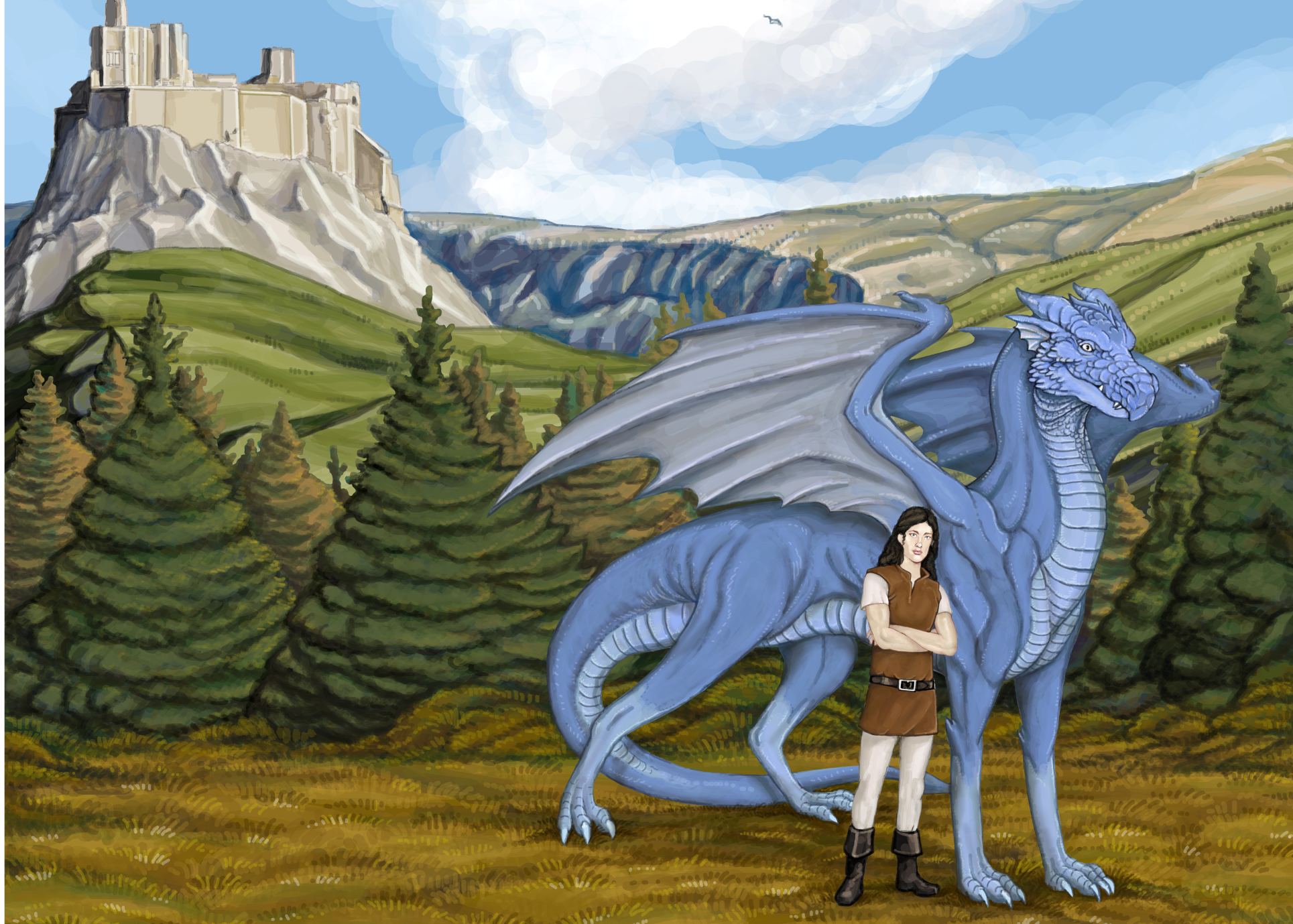Callopsy Bird
"Elder, why is it we need to hunt those birds? They are so pretty." "Well child, they are delicious and have a habit of stealing our seed grain. With the turning of the seasons from summer to harvest their meat is plump and juicy. Perfect for the Callopsy rolls." "Is that why we have their feathers in ornamentation on our festive clothing and crafts?" "Yes. There is no other bird like the Callopsy, and so even though we consider them to be pests we also honour them."
Basic Information
Anatomy
The callopsy bird is a cross between a raptor, corvid, and parrot. They have bright biolumenscent feathers in blues and greens. It has the beak of a corvid and the talons of a raptor. Their wingspan is three feet across. They stand two feet high with a crest that extends an extra four inches.
Genetics and Reproduction
These birds lay two to four eggs at a time though they only clutch once every three years. The eggs take about six weeks to hatch.
Growth Rate & Stages
Hatchling:
from the time they break out of the egg until about three months.Fledgeling:
this happens at about three to four months of age when the mother bird gives them a push out of the nest. Fledgelings start with short glides and progress to full flight by the time they are a year old.Juvenile:
This stage lasts for about two years. This is the time that the parents teach them to hunt while they are still developing their adult plumage.Adult:
Once the callopsy bird has reached three years of age they have their adult plumage and are ready to strike out on their own.Ecology and Habitats
These birds can only be found nesting along the edge Abhainn Bhogha. They hunt the plains of Thormalk and Lake Veristo.
Callopsy birds are omnivourous, and as such can be a pest to the Thormalkian farmers.
Dietary Needs and Habits
Though callopsy birds are primarily carnivourous they do need to eat seeds and berries to complete their dietary requirements. Though they prefer the vegetation along the banks of Abhainn Bhogha, they will gather seeds which have fallen to the ground out in the vast plains of Thormalk, thus fulfilling two needs at once as they hunt the rodents within the plains.
Additional Information
Domestication
Callopsy birds do not fare well in captivity and their plumage loses all of its bioluminescence. Due to this the [Thormalkians have declared the birds as undomesticatable.
Uses, Products & Exploitation
Callopsy birds are considered a delicacy in Thormalk. They are hunted for their meat and their feathers.
Perception and Sensory Capabilities
Callopsy birds have exceptional eyesight able to see a mouse in field or a fish in a lake from a mile away.





Comments